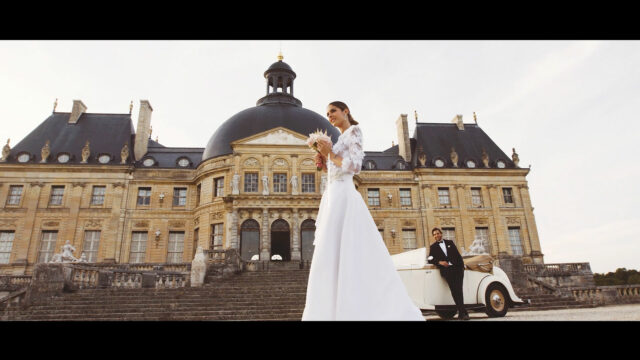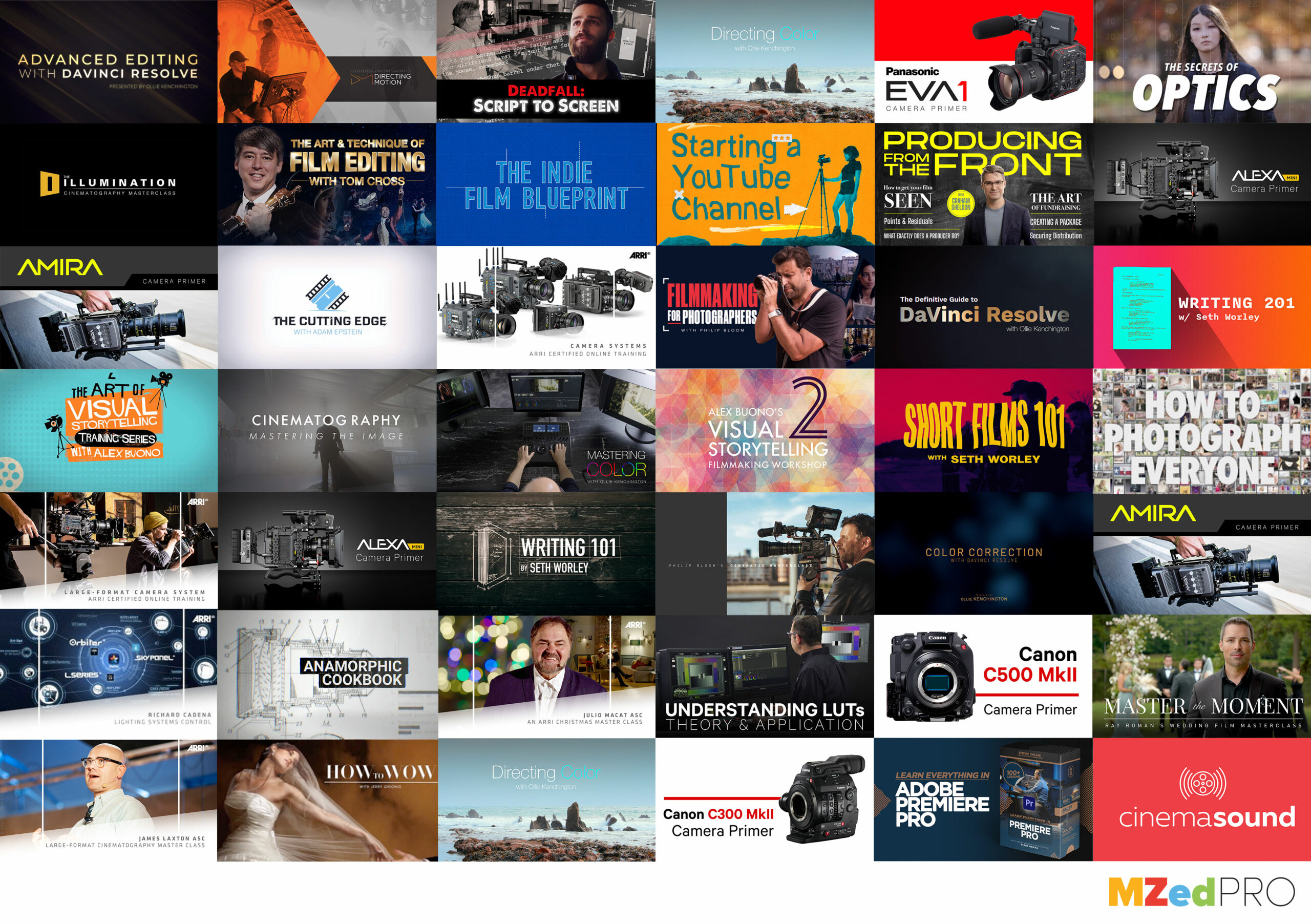

The goal of every wedding filmmaker is to succeed as a business, which in a nutshell means doing less weddings but charging more. How do you do that?
Over time, a wedding videographer will naturally improve the quality of his or her services, which will pave the way for clients who can afford higher end wedding films. But that process can take a long time, and finding the right balance between pricing and product in your local market can be a stressful experiment as you’re trying to make a living.
So why not shave a few years off the process and take some tips from someone who’s already gone through all of the experiments and found an approach that attracts the highest level of clients who can afford to hire more expensive wedding videographers?
In his “Master the Moment” course on MZed, Ray Roman illustrates precisely how he went from being a SWAT officer to becoming one of the best wedding filmmakers in the world. He provides a blueprint to planning and shooting a wedding, down to shot planning, scheduling, shooting with multiple crew, audio gathering, editing, and more.
But at the end of the course, Ray gives viewers a glimpse into the business side of wedding videography, even sharing his contract and pricing template. Why give away his business secrets? Ray believes that there is way more high end luxury wedding work out there than he or other wedding filmmakers can currently take on. So by giving everyone a guide to improving the quality and increasing the budgets of wedding films, the overall wedding industry can rise together and bring everyone along with it.

In the Business Development and Marketing lesson of the Master the Moment course, Ray interviews a high-end luxury wedding planner to find out what it takes to get on their radar. Of course the first thing you need to excel at is the wedding filmmaking itself, and there’s no shortcuts. You will most likely need to have a crew of two or three to properly capture all the angles during the first look, the ceremony, the reception, and so on. But if you can produce a high quality wedding film as a solo shooter, more power to you.

The second thing the wedding planner looks at is your brand. It has to match the level of wedding clientele you’re targeting, which means you have to dress sharp, you have to be elegant in the way you shoot and present yourself at the wedding (and work alongside the photographers), and you simply cannot disrupt the flow of the wedding day. Most of all you need is to be courteous, well-spoken, and patient.
And the brand extends to your website and social media presence as well. You have to present your work in a way that is reflective of your quality.

The way you present yourself doesn’t just mean you, the wedding business owner. It also means your team has to be on top of their game as well. They are the extension of you. A good team carries themselves well, they aren’t glued to their phone during the shoot, they aren’t at the bar or eating with the guests. And they are dressed for the event, whether that means a suit, black shirt and tie, or other appropriate professional clothing.
And of course the way you solve problems and communicate with the clients has to be considerably practiced, but that takes time and experience.
And then there is the contacts, which in this case is the wedding planner. They might get 50 or 60 links a week from wedding videographers – how do you get into their vendor list? The truth is, a wedding planner has a ton of responsibility and they don’t want to take unnecessary risk with taking on new vendors, so if they already have their go-to wedding filmmaker, it will be tough to get into their inner circle.
But if you join wedding industry chapters, network, and put yourself out there, you will eventually build relationships and get the high end gigs. And once you do, it’s incredibly important to not damage the relationship, which means you need to only take on work that you can actually deliver. You don’t want to be back-logged with wedding edits while wedding planners are wondering if you’re really capable of delivering what you promised.
So as Ray says, wit until you’re ready, wait until the time is right, until the point when you can look at every aspect of your work and brand and be confident that you can deliver high-end results.

Getting Into the Top End of the Wedding Business
Once you’re ready, how do you get into the higher end wedding market? There is a lot of work in the low to mid-range where many wedding filmmakers start, and it can be comfortable to stay there. But you will have to shoot and edit many weddings per year.
For Ray, he says he was in this range for a long time, but he wanted to get to the point where he was doing maybe 20 weddings per year, which for him meant getting into the top end of wedding film budgets. But to get there is very challenging.

Ray says, “You’re talking about very small circles of vendors, everybody knows each other and if you mess up in the high-end, you’re pretty much done and they’re gonna bump you back down to the low to mid-range, and you’re probably gonna live there because you’ve already established a bad reputation in the high end, and you don’t wanna do that.”
So if you’re not quite ready for that kind of pressure, Ray recommends hanging out in the low to mid-range until you can smoothen out your entire workflow. So be patient, improve your process, grow your brand, and then eventually you’ll get to the point where you connect with some luxury wedding and event planners and you’ll be primed to enter the world of high end weddings. It’s a slow and gradual process, not a jump.
Tips for Pricing High End Wedding Videography
Every wedding filmmaker has to eventually come to a decision on pricing. There are many approaches, but Ray shares what has worked for him when it comes to higher level weddings. For Ray Roman Films, the key is to set a happy rate that the clients agree on, and then to offer an assortment of add-ons.
Ray says the first step is to send a questionnaire to find out the details of the wedding day. It’s important to know as much as you can about the setting, the audio configuration, the schedule, expectations, and so on. Then you prepare a proposal for the base price, and you send it off for approval. After that comes the up-sell.

“Once they approve the proposal, I’m gonna send out a contract, now quest what? When they receive that contract, they’re gonna see for the very first time a whole list of extras that they can actually add to that base price if they have the budget. If they don’t have the budget, I’m still gonna be happy because they’ve already approved the happy price. But if they’ve got a bigger budget, now maybe they’re gonna look at that a la cart and say things like, ‘Oh you know what? Maybe we’ll add a trailer, maybe we’ll add rehearsal dinner coverage, maybe we’ll add raw files.’”
This approach is very different from the package model, where you offer different packages at various price points. Ray says he did that for years, but he found that each couple had very different budgets and ideas for what they wanted, and often he was leaving money on the table by sticking to his preset packages.

Your base product might be very different from Ray’s, where he offers one lengthy film he calls the feature film. Maybe your base product is a love story with reception speeches, or maybe your base product is a Multicam shoot of the ceremony. Whatever you prefer to offer as your foundation product, it makes perfect sense to help guide the couple to what you are good at making, and what you think they’ll enjoy the most. But it’s hard to know if they want something more unless you give them the opportunity to pay for more.
In the Master the Moment course on MZed, Ray goes into much more detail as he provides a full blueprint to how he tackles high end wedding films. As a bonus to the video guide, Ray has also prepared a contract and pricing template that you can apply to your own wedding business.
Learn with MZed Pro
As an MZed Pro member, you get access to nearly 300 hours of filmmaking education, plus we’re constantly adding more courses. For just $30/month (billed annually at $349), here’s everything you’ll get:
- 42 courses, over 500 high quality lessons spanning nearly 300 hours of learning.
- Highly produced courses from educators who have decades of experience and awards, including a Pulitzer Prize and an Academy Award.
- Exclusive access to ARRI Academy online courses.
- Unlimited access to stream all the content during the 12 months.
- Offline download and viewing with the MZed iOS app.
- The majority of MZed courses provide an industry-recognized certificate upon completion.
- Purchasing the courses outright would cost over $9,800.
- Course topics include cinematography, directing, lighting, cameras and lenses, producing, indie filmmaking, writing, editing, color grading, audio, and even how to launch a YouTube channel.
- 7-day money back guarantee if you decide it’s not for you.
- After the first year, the annual renewal rate is $199, a savings of 57% from the new member rate.

Join MZed Pro now to get started!
Full disclosure: MZed is owned by CineD
What is your experience with high end weddings? Share your thoughts in the comment section down below!





